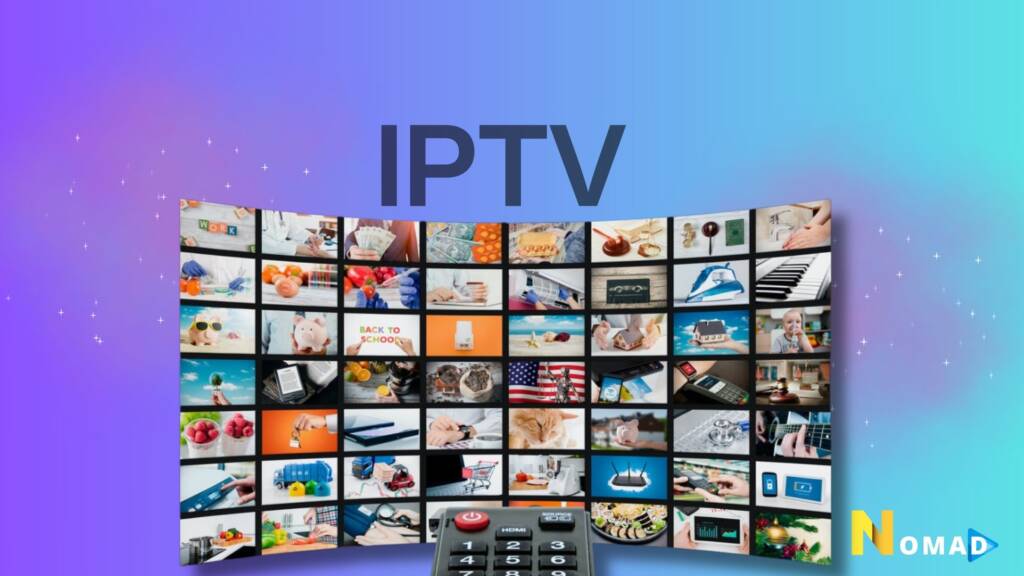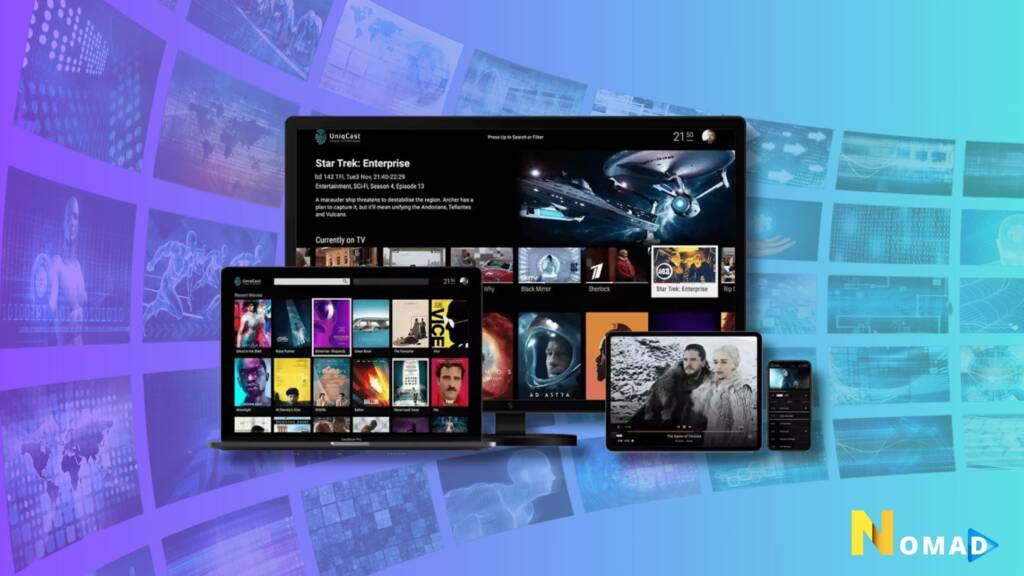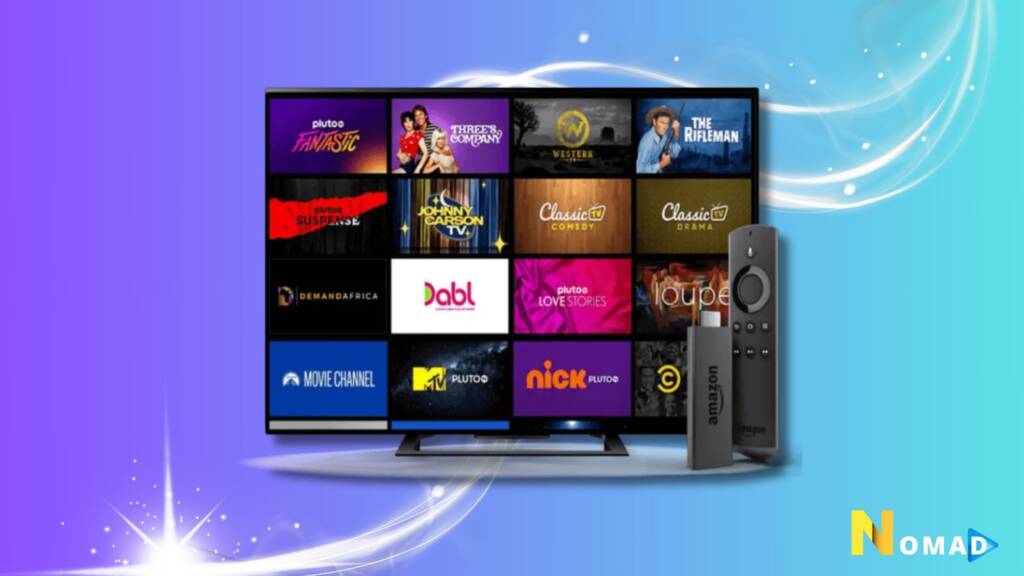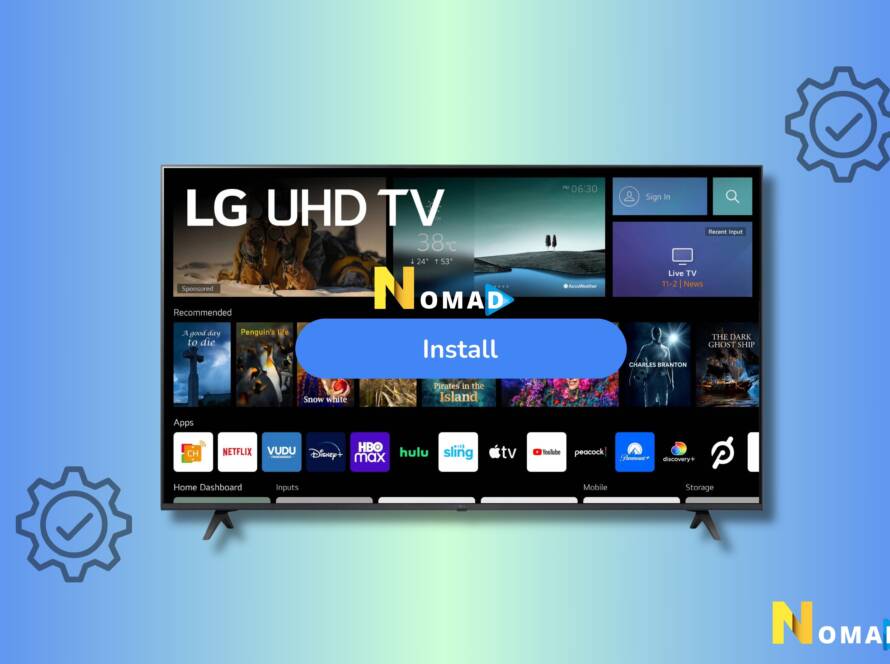Evolution of IPTV The [Evolution of IPTV has had a significant impact on how we watch television. Internet Protocol Television (IPTV) has emerged as a strong alternative to traditional broadcasting methods because it offers greater customisation, flexibility, and engagement. This article highlights the impact IPTV will have on the entertainment industry while examining its evolution, history, and future advancements.
Table of Contents
Early Beginnings of IPTV

With the broad availability of the internet in the late 1990s, the [Evolution of IPTV got underway. At the time, the idea of broadcasting television shows online was creative and held an opportunity to upend existing broadcasting practices. The first IPTV services were crude, had little content, and had many technological difficulties. Issues with bandwidth and high-speed internet access initially hindered the widespread acceptance of IPTV.
The future potential of IPTV was evident even in the face of these early challenges. The viability of IPTV increased as broadband connections proliferated and internet infrastructure advanced. To offer a flawless watching experience, service providers started experimenting with various delivery strategies. As the foundation for more advanced systems and services was created by these early tests, the [Evolution of IPTV] proceeded.
Advancements in Technology

Technology made significant breakthroughs during the [Evolution of IPTV, which was vital for its expansion. IPTV was able to reliably deliver high-quality video material because of the development of stable streaming protocols, better compression techniques, and fast internet connections. These technological advancements improved IPTV’s viability for both service providers and customers by resolving many of the early problems.
Multicasting technology development was one of the major turning points in the [Evolution of IPTV] story. With multicasting, IPTV providers could send a single data stream to several consumers at once, greatly cutting down on the bandwidth needed for live broadcasts. This innovation made live TV channels online possible, which raised the allure of IPTV services. IPTV’s features and capabilities developed along with technology, giving it a competitive edge over traditional cable and satellite TV.
Rise of On-Demand Content

In the [Evolution of IPTV], the arrival of on-demand content marked a major turning point. IPTV gives customers more control over what and when they watch TV than traditional TV, which has a predetermined schedule. Changing consumer preferences and a desire for more control over the viewing experience were the driving forces behind this shift towards on-demand streaming. Services like Netflix and Hulu, which offered sizable streaming collections of movies, TV shows, and original content, tapped into this trend.
The popularity of on-demand services brought to light the advantages of IPTV over conventional broadcast techniques. With the ability to watch programming whenever it was easiest for them, viewers were no longer limited to strict timetables or risked missing their favourite shows. This flexibility was revolutionary, and as more providers embraced on-demand methods, the [Evolution of IPTV] quickened. One more feature that distinguished IPTV from traditional TV was the ability to pause, rewind, and fast-forward through programs.
Integration with Smart Devices
As the evolution of IPTV developed, smart device connectivity developed as a major area of interest. The growing popularity of tablets, smartphones, and smart TVs created new opportunities for IPTV consumption. Now, viewers can access their preferred material at any time and from any location using a range of devices. This multi-device adaptability was a big plus because it fit a lot of customers’ modern, mobile lifestyles.
The creation of IPTV applications for many platforms enabled this integration, easing the process for users to stream media on the devices of their choice. An important turning point in the [Evolution of IPTV] was this move towards device agnosticism, which increased its accessibility and reach. The IPTV experience was further improved with technologies like cloud DVR and multi-screen viewing, which let users record and watch programming on several devices with ease.
Interactive and Personalized Viewing
Another improvement brought about by the [Evolution of IPTV] is a more customized and interactive viewing experience. In contrast to traditional TV, which provides a one-size-fits-all strategy, IPTV services allow users to customize material to suit their tastes. Advanced algorithms that examine viewing patterns and make content recommendations based on user behaviour enable this customisation. Viewers find IPTV more appealing when personalized recommendations increase user pleasure and engagement.
The IPTV experience has been improved by interactive elements like interactive ads, real-time discussion, and live polls. By allowing viewers to interact with the information in new ways, these elements foster a participative and immersive experience. With providers always looking to innovate and improve the customer experience, the [Evolution of IPTV] keeps pushing the envelope of what is possible.
Future Innovations in IPTV
There are no signs that the [Evolution of IPTV will stop shortly. Future developments in artificial intelligence (AI), virtual reality (VR), and 5G are expected to significantly transform IPTV services. 5G network deployment is expected to bring quicker and more dependable internet connections, allowing for high-quality streaming even in places with spotty broadband coverage. This innovation will improve IPTV’s accessibility and viewing quality by delivering buffer-free, continuous feeds.
Machine learning and artificial intelligence will be crucial to the [Evolution of IPTV. These technologies can boost video quality through real-time optimization, improve user interfaces, and make even more precise content recommendations. Additionally capable of producing immersive viewing experiences and enabling viewers to interact with information in whole new ways are virtual reality (VR) and augmented reality (AR). These technologies will probably become vital parts of the IPTV environment as they develop, spurring additional innovation and expansion.
Impact on the Entertainment Industry
The entertainment sector has been greatly impacted by the [Evolution of IPTV. To stay competitive, traditional broadcasters and cable providers have had to adjust to the shifting market by adding IPTV elements to their packages. New revenue streams and business models, like pay-per-view, subscription-based services, and ad-supported content, have also emerged as a result of IPTV’s growth. Both suppliers and customers have profited from this variety, which has increased options and flexibility.
Distribution and production of material have also become more accessible because of the [Evolution of IPTV. Through IPTV platforms, independent producers and smaller production firms can now skip traditional gatekeepers and reach global viewers. This change has created a more dynamic and varied content ecosystem that is conducive to the growth of independent voices and specialized genres. IPTV has had a profound effect on the entertainment sector, changing how material is created, shared, and enjoyed.
Conclusion
The way we watch television has changed as a result of the evolution of IPTV, which offers more customization, flexibility, and interaction. Since its inception, IPTV has evolved continuously thanks to developments in technology and shifting consumer preferences. Future developments in technology hold the potential to significantly transform IPTV, improving the viewing experience and extending its reach. The development of IPTV is proof of the creative potential that can be harnessed, and its influence on the entertainment sector will continue to influence how we watch media in the years to come.
FAQ
Q1: How has IPTV technology advanced over the years?
IPTV has seen advancements in high-speed internet, compression algorithms, multicasting, and the development of robust streaming protocols, improving video quality and reliability.
Q2: What is on-demand content in IPTV?
On-demand content allows viewers to watch programs whenever they want, rather than following a fixed schedule, which is a key feature that differentiates IPTV from traditional TV.
Q3: How does IPTV integrate with smart devices?
IPTV services are now accessible on various smart devices like smartphones, tablets, and smart TVs, allowing viewers to watch content anywhere, anytime.
Q4: What future innovations are expected in IPTV?
Future innovations include the integration of 5G for faster streaming, AI for personalized content recommendations, and VR/AR for immersive viewing experiences.
Q5: How has IPTV impacted the entertainment industry?
IPTV has democratized content distribution, introduced new business models, and forced traditional broadcasters to adapt, leading to a more diverse and flexible media landscape.
Q6: What challenges does IPTV face?
Challenges include piracy, content licensing issues, and network congestion, especially during peak times, which IPTV providers are actively working to overcome


